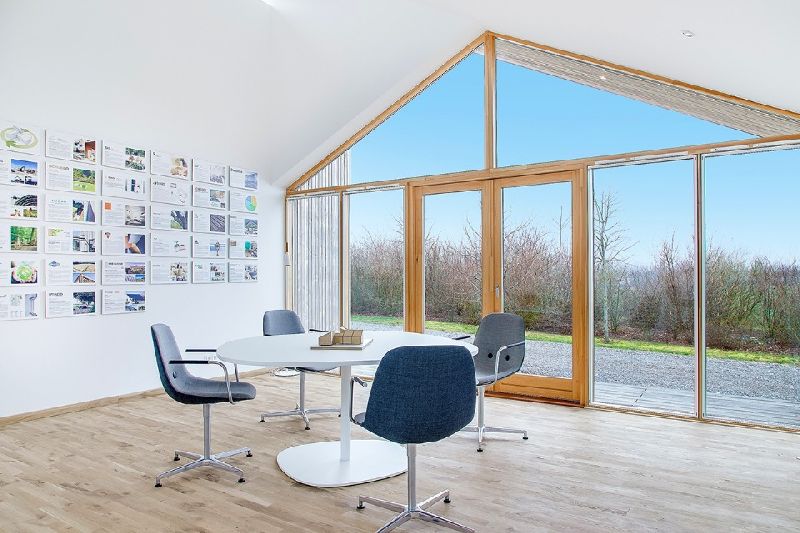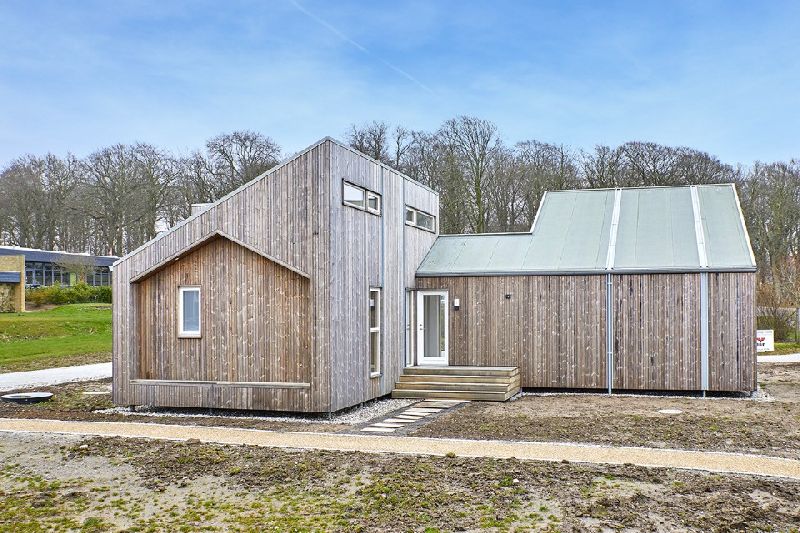The world’s first ever ‘ Biological House ‘ has been conceived, layout drawn up, implemented and construction completed to mark an inaugural function organized by a Danish firm Een til Een. Blocks of raw materials that have gone into building this wonder structure come from transformed agricultural decay comprising of grass, straw, and sea weed.
The construction of this ‘Biological House’ was a cloak and dagger operation. The construction had been done in favor of the new BIOTOPE eco-park located in Middelfart, Denmark. In each phase of the project, environmental sustainability was the prime criteria.
So far as the design brief goes for the biological house, special emphasis is put on ensuring standards in:
– Health
– Architecture
– Quality of construction materials
– Indoor air quality
– One off design
It is an appreciable effort of a multidisciplinary crew to back its construction. Over 40 partners including a Copenhagen based design firm Een til Een, sustainable architecture firm GXN, wood treatment firm Kebony and the Danish Ministry of Environment, Novofire, Horn Group, Thermocell and Derbigumk have amalgamated their efforts and the ‘Biological House’ came into existence.
Zero-emission construction:
 Image Source : domusweb.it
Image Source : domusweb.it
The beauty lies in the fact that the construction process and the building itself have a zero impact on the environment. Regular construction activity with conventional material (concrete, timber and steel) pumps a spray of debris in the air. Here, this novel project puts an end to polluting the atmosphere. This revolutionary and eco friendly enterprise has earned support of the Danish Ministry of the environment fund for ecological construction.
Adopting the philosophy of circular economy:
It is a circular loop initiating from accumulating the raw materials and its processing, construction and finally dis-assemblage of the building generating zero waste. The materials can be conserved and the entire structure can be safeguarded in all its elements over a prolonged span of time. This is way different from the conventional construction where the building materials get damaged while dismantling.
Up cycling Agriwaste:
 Image Source : domusweb.it
Image Source : domusweb.it
All agricultural wastes which would otherwise have landed in an incineration plant were synthesized into raw materials that went into building construction. It was a wonderful recycling of resources culminating in a productive end use where the burning of agro garbage was avoided sparing the environment a pollution threat.
Mounds of grass, sea weeds, tomato stems and straw were mixed into composites for imparting reinforcement. The materials are thereafter rammed into hardboard prior to cladding. The biggest advantage is that the biological house comes in a modular form and can be customized according to the customers’ needs.
Innovation in construction materials to ensure durability:
On technical front, a futuristic application of veneer was an architectural emphasis to give the building a convincing eco-friendly look. Kebony, the world’s pre eminent manufacturer and supplier of construction timber had done a bit of seasoning of the building material.
Softwoods procured from sustainable farms were first tempered by a bio-based chemical. The process brought about polymerization of the cell walls of the timber. This is a ground breaking process originating in Norway that transforms soft woods into hardwood lamina which have a lasting life fit for construction. In case of this biological house, the silver grey cladding matures with time and develops a coat giving the house a fresh pastoral appearance.
Polymerization of the timber cells imparts a deep brown color to the wood and makes it very hard ensuring durability and strength of the biological house. The structure turns as robust as concrete but without its harmful effects on the environment.
The foundation was on screw piles instead of a concrete platform so that the entire structure can be dismantled and assembled again at any given coordinate. This innovative foundation also helps in moving the structure at any place without causing any impairment of the topography of the place on which the building stands.
The endurance of the construction timber to withstand the wear and tear of time was tested by the Danish Technological Institute. The material was certified fit for construction.
Hopefully, in near future we will have biological houses for shelter. They are more environment friendly, more flexible and would beat our regular houses in terms durability and living worthiness.


